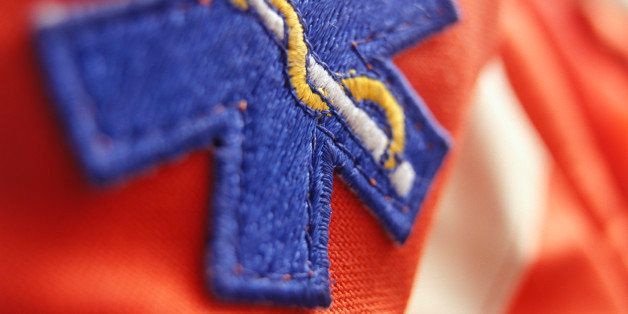
If you are a member of the military and you are in trouble in real life, the Dark Knight and the Avengers can't help. Who do you hope will come save you? A pararescueman.
The mission of the Air Force Special Ops Pararescuemen is "to rescue, recover, and return American or Allied forces" when they have been "shot down or isolated behind enemy lines; surrounded, engaged, wounded, or captured by the enemy."
Here's what's cool. I was taught to be an Wilderness Emergency Medical Technician -- a WEMT -- by Josh Martin, a former Special Ops Pararescueman.
Here's the essence of what he taught me about helping others survive through the worst that is out there:
1. Don't be fearful of the unknown.
2. Have a system for assessing what you are facing.
3. Study all the options and practice all your responses.
4. Follow through.
I signed up for the WEMT course because I'm a rock climber -- in fact I am an instructor at my university and I also lead trips into the backcountry. We say in our university Outdoor Pursuits program that rock climbing is an inherently dangerous sport. To respond to that danger, we build in redundant systems. There's not just one safety mechanism, there's multiple. But even given that duplication, there are so many things that can go wrong.
That's why I wanted to be a WEMT.
Josh Martin and his team taught our small WEMT class two related sets of skills: he taught us to be EMT-basics AND he taught us the Wilderness and Rescue Medicine upgrade so we could become WEMTs.
An EMT-basic is the first rung on the ladder in emergency medicine -- it's the likely certification level of the junior person helping you when you call an ambulance. Wilderness and Rescue Medicine certification is different. EMT training gives first responders the skills to get patients to a hospital. Wilderness training teaches students "how to approach a medical emergency when help is miles away and calling 911 isn't an option... emergency situations that involve prolonged patient care, severe environments and improvised equipment."
In our Michigan-based WEMT course we went through 70 hours of online instruction -- which included 41 quizzes and seven exams -- and about 60 hours of classroom lectures. In other words, we studied. We also went through an additional 40-or-so hours of outdoor simulations and 36 hours of ambulance and emergency room clinical experiences. We practiced.
I enjoyed the course work -- I want to be a doctor, so I'm nerdy enough to think the science is fascinating. But I loved the simulation exercises. We'd walk out of our classroom into the surrounding forest and we would come across someone who would be lying on the ground. We'd have to figure out what was wrong with this pretend patient and treat him or her. Even though no one's life was actually on the line, my adrenaline was still pumping while I tried to figure it out. I would go through the primary and secondary assessments of evaluation, considering the patient's airway, breathing and circulation and such other concerns as scene safety. All of a sudden what I had learned from the textbook and the Power Points became real. Visual and aural learning became kinesthetic learning. Out there in the trees I could apply what I had been taught. It felt great when I diagnosed the patient properly and -- at least in the simulation! -- saved the patient's life.
From Josh I learned key differences between being an EMT and being a WEMT. There are different protocols about what EMT-basic certified responders can do in an urban environment and what WEMT responders can do in the backcountry. Wilderness courses teach their students that because definitive care may be several hours away, responders can, within the limits of the WEMT protocols, try to reduce a shoulder dislocation, for example -- an intervention that is not in a metropolitan EMT's scope of practice. I wanted to be a WEMT because on a climb a dislocated shoulder can happen quite easily -- someone swings hard against a cliff or has a fall. And that can be scary.
What I learned from Josh the former Pararescueman is that the way to manage fear is to plan for what to do if and when something does go wrong. People are fearful when they are uncertain about what they are facing and about what they can do. Josh taught us how to figure out what had happened, and he taught us what was in our scope of practice to do.
Josh taught me how to help others survive. And he taught me how to overcome my own fears.